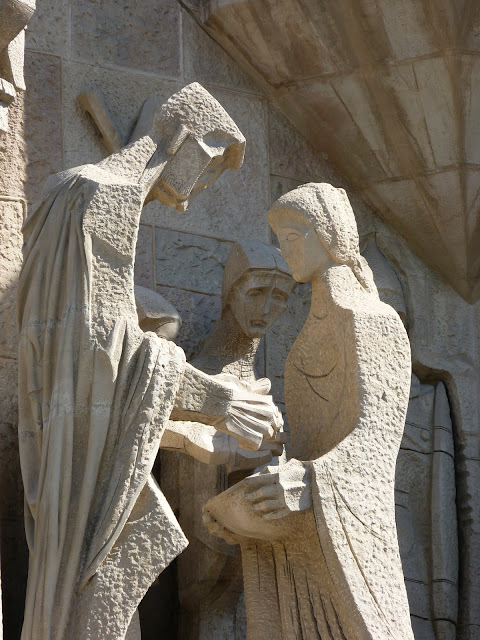I was lucky enough to spend a long week-end in Barcelona a couple of weeks ago. I had spent a bit of time there almost a decade ago (omg it hurts!) and I had the greatest memories about it. Having such high expectations made me a bit worried. Would it be as good as I remember? Would the amazing lively atmosphere have disapeared under the pressure of mass tourism? Well, not at all, if you ask me. The crowd is part of the atmosphere of the city and if you want to avoid it, you can. In my opinion, this city has everything a tourist can ask for : friendly people, very lively neighbourhoods, cool and relaxed atmosphere in the Barrio, amazing architecture, great food, warm climate, large beach accessible by foot from the city center... What more can you ask for, really?
Obviously if travelling to Barcelona there is a monument you HAVE TO see : la Sagrada Familia. The first thing you should do is book your ticket on line before (here) to avoid the 2-hour long queue. Nice tip, huh? Once you get in, you are in for a treat. Of course I used to study history of art and I am passionnate about architecture so I obviously loved it, but not only. This place managed to leave me speechless and absolutely overwhelmed by its beauty, its character, its originality.
This cathedral was designed by Antoni Gaudi, one of the most incredible architect of modern times, a man who had a vision for the city, carried out his project until his very last day (he died pretty tragically, hit by a tramway) and even further, since the architects of the Sagrada Familia still follow his plans to this day.
There would be hundreds of things to say about this church but let's focus today on one very specific aspect of it : the sculptures of the Passion facade, located it on the West side of the church. Why? Because it's a perfect mix of Gaudi's vision from the 19th century and the interpretation of this vision by Josep Maria Subirachs, the contemporary artist who created this beautifully dramatic environment.
The Passion facade is in total contrast to the highly decorated Nativity Façade. Being dedicated to the suffering of Jesus during his crucifixion, the facade is purposely austere, plain and simple and is carved with harsh straight lines to resemble a skeleton. Its construction began in 1954, following the drawings and instructions left by Gaudí for future architects and sculptors. In 1987, a team of sculptors, headed by Josep Maria Subirachs, began work sculpting the various scenes and details of the façade. They aimed to give a rigid, angular form to provoke a dramatic effect. Gaudí intended for this façade to strike fear into the onlooker. He wanted to "break" arcs and "cut" columns, and to use the effect of chiaroscuro (dark angular shadows contrasted by harsh rigid light) to further show the severity and brutality of Christ's sacrifice. (Wikipedia).
The scenes sculpted into the façade may be divided into three levels. The lowest level depicts scenes from Jesus' last night before the crucifixion, including The Last Supper, Kiss of Judas, Ecce Homo, and the Trial of Jesus.
The middle level portrays the Calvary and includes The Three Marys, Saint Veronica, and Saint Longinus.
In the third and final level the Death, Burial and the Resurrection of Christ can be seen. 









No comments:
Post a Comment